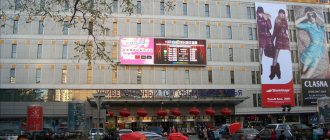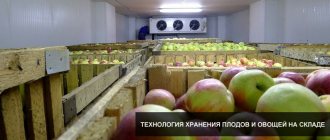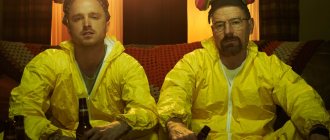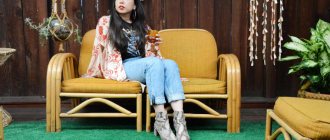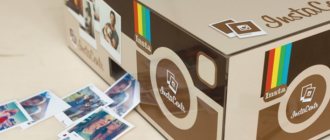Ideal location for filming
Your home photo studio should occupy a specific corner of the house, where every detail and equipment has its place. You don't want any family members to accidentally get caught on the cord, or have to carry wires or move lamps from place to place.
A specially allocated space for a photo studio is no less important for clients. When they come to you for a shoot, they will feel much more comfortable that they are not invading your privacy. After all, sooner or later someone will become uncomfortable and this will be reflected in the quality of the photographs.
Plus, having a separate room or corner will help you isolate your work from another part of the house. You will simply need this if you have children who want to watch cartoons or run around the house. These and similar distractions will keep you or your clients from concentrating.
Sometimes it’s not easy to dedicate an entire room to a photography studio, but believe me, it’s worth it. Assess the situation, think creatively, and ultimately see what you can do in your home.
Synchronizers
Flashes definitely need synchronizers. If you have chosen Yongnuo version 3 and 4, then you will only need one Yongnuo RF 603 C transmit synchronizer, which is installed on the camera hot shoe.
VIDEO COURSES | PHOTO EQUIPMENT | BOOKS | PRESETS Books for photographers, video courses and presets. All this is easy to find on our website. To find out more, click read more .
This device is compatible with Canon and Nikon cameras. We are not considering options with TTL, since this is absolutely unnecessary in a home studio and will be much more expensive.
For this set you will need two umbrellas for reflection or light. Better for reflection, then the beam of light will be more controlled. They are installed on racks that are two meters high.
Why is a crane needed? This is just a drawing light source. It could have been replaced with a simple umbrella stand and it would have been cheaper. But then a home photo studio would not be complete. We install a small softbox on the crane.
There are several types of this light modifier. It doesn't matter whether it's an easybox or an umbrella-type softbox. The main thing is that it is light and the crane can withstand it.
A reflector is not necessary, but it will look better. This device is not expensive, but it will open up many more possibilities for you in working with light. Plus you will also need flash mounts, batteries and a charger for them.
Studio background
The background can be chosen from paper or fabric. It is better to order paper on AliExpress. They also sell mounts for wall mounting. But this is already a solid option. If you need to go on filming with this studio, then it is better to take the so-called gate. These are two stands with a crossbar on which you can hang a background.
How fast can you go in a room?
The first obstacle you'll likely face in your home photography studio is - is there enough space in the room for a zoom? If your shooting room is on the small side, you'll have very few options for a variety of photos, worst of all, if the photos turn out distorted due to the focal length.
If you use wide-angle lenses and stand close to your subject, your photos will be distorted. In this case, you will have to take a couple of steps back and the main thing here is not to climb onto the wall. In other words, you physically need enough space.
If you are shooting full-length, the room should be 5-6 meters long, no less. If you don't want distortion in your photo, don't take a lens wider than 50mm.
Sync Speed
In simple words, if you shoot at a shutter speed shorter than your camera's sync speed, then in your photos you will see a black stripe on one side of the frame. This strip is the shutter “curtain”, which is still moving at the moment the pulsed light source is triggered.
Obviously, a photo with a black stripe is a defect. To avoid it, just set the shutter speed longer than the sync speed. Most modern cameras have a sync speed of 1/200 second. Some cameras can sync flash at 1/500th of a second. (translator's note - check the sync speed - X-Sync - of your camera in the instructions.)
Be aware of low ceilings
The depth of the room is a serious limitation, but equally important for photography is the height of the ceiling. If you have a low ceiling, light will likely reflect off it. So you don’t even notice how the ceiling becomes a huge reflector, adding a lot of extra light.
You will have to work with your setup in the studio, learn how the light behaves with a low ceiling to avoid unnecessary backlighting.
Another limitation of a low ceiling is that there is not enough space to place a hair light. This backlight is used to backlight a subject and separate it from the background.
If you have low ceilings, this kind of lighting can only be used for a sitting position, but not for a full-length position (unless children can be photographed this way). You will need an average of 1 meter between the lamp and the object.
Important Features
The choice of scenery will depend on the subject of filming. If this is a staged shoot, then stylization of the composition and production elements is necessary. Technical photography does not require special artistry, the main thing is to ensure clarity of the object, its shape and color. When doing interior photography, it is important to use good technology so that the photos are obtained with maximum resolution. In portrait photography, you need to capture the model’s individuality, her mood, and the depth of her gaze. Each photographer has his own special style that expresses his creative personality. The interior should have different style options. From elaborate Empire to calm Provence. Modern, Lift, Vintage are also popular. Particular attention should be paid to event photography: holidays, weddings, births.
Various lighting equipment will take up a lot of space in the studio. It needs to be installed in the right places, taking into account light and shade. You need to think about how best to secure and install them, on the floor or attach them to the wall. Hanging lighting is more convenient. Movement is ensured by a special sliding system with height adjustment.
Interior design of a photo studio requires special knowledge, perception of space, and creativity, which must be combined together to create an individual and successful solution. This problem cannot be solved in a short time. You may have to spend whole months on this in order to then enjoy the good results obtained and work in a comfortable environment.
Using light from the window
If the light from the window is used correctly, it will be a great advantage for you. But a window in a home photography studio also has negative consequences. Let's look at the pros and cons:
“Pros” - soft, smooth - no flash needed - easy to remove if necessary using thick curtains
“Cons” - direct rays of the sun, if the window is not facing north or south - difficult to control - limited possibility of creative use
How to control natural light?
Light from the environment appears when you least expect it. The reason for this may be light from the window, the room itself, reflection, etc. With our naked eyes, we rarely notice unwanted extra light until we look at photographs.
Have you ever thought that a mixture of incandescent and flash light could be that unwanted light that ruins all your work?
The soft, warm, yellow light of an incandescent lamp is very different from the light of your flash. This problem can be solved very easily: change the light bulbs in the room to daylight bulbs that glow white.
To better manage natural light, you must first identify its source. Once you find it, try your best to get rid of it.
Choose a decorative background
A decorative background is simply a decoration for your composition. Good backdrops don't have seams that distract from the subject in the photo. You can purchase a variety of decorations: pure white backgrounds, graphic prints, cities, etc. The only thing that will limit you in the number of backgrounds is the place where you can store it all.
Plain wallpapers are considered the most fashionable. Take some neutral tones and use helium light to change the background color, you can also do this in Adobe Photoshop when editing the photo.
In addition to a good background, it will be great if you learn to eliminate distractions, become more professional, and have better and better control over the quality of your photos.
If you don't have much space to store wallpaper, buy a special wall mounting device on which you can hang 2-3 rolls and lower or raise them as needed. If this is not an option for you, use stands.
Ivan STEPANOK
Fate turned out to be that I work as a designer in a supermarket. And I must tell you that the work of a designer in a supermarket covers a whole range of professions! From a personal example: Design of promotions and then printing on a printer, large format, printing (booklets, handouts), web design, photography, and even advertising audio clips in the hall. No, I don't write them down, I make sure that they all go in their own time. And now for more details. Sometimes, once or twice a week I have to photograph objects (vodka, Pepsi, tea, pillows, toys, cheesecakes) and make fun standard promotions out of them. And then the question arose in my head, how to achieve professional quality in “home” conditions?
So, we have: 1) Canon PowerShot S45 digital camera, 4 megapixel 2) A lot of paper of all densities 3) Scissors and a stationery knife 4) A sheet of thick A3 paper 5) 40 USD 6) Tripod 7) Great desire First of all, I went online in search of well-trodden paths, and eventually found offers to buy mini-photo studios and lighting for them for decent money, plus one article for assembling a mini-photo studio at home. But it didn’t suit me, because... it constantly needed to be assembled and disassembled again. After pondering for a couple of days, I moved on to action. He brought a cardboard box, measured its dimensions, it turned out to be 80x50x50. I drew a drawing on the computer, calculated all the dimensions, then transferred the cutting locations to the box. Then I cut holes in it on the sides and front with a utility knife. I carefully covered everything inside with a white sheet, carefully attaching it to the box with straightened paper clips. The top of the box was covered with white paper. I pasted an A3 sheet of paper onto the front of the box, cut a hole in the middle exactly for the lens and voila! Half the job is done!
Then I bought 2 lamps with a tripod mount and “smooth” legs. The box is placed on the table, lamps are attached to the sides. The light of the lamps passing through the sheet is scattered, and eventually becomes soft, without sharp shadows or transitions. We put the object to be photographed in the box. For example a bottle of beer. We place a tripod in front of the box on which the camera will be mounted. We lean the camera lens against a pre-cut hole, set the camera to manual mode, select the white balance, and take test pictures. All you have to do is look at them on your computer, find out what the photos are missing, and continue taking pictures!
Good advice: Set the shutter speed so that the background is whitened as much as possible, but the subject itself remains without overexposure. Then cutting out such photos using a magnetic lasso will be a pleasure!
Source "HE" - virtual photo magazine
Creative workshop
By adding even the smallest element to a photo, the overall look changes. It’s hard to unleash your imagination in the studio, as it is in nature, and after a while it begins to seem to you that all the pictures are identical. You need to dilute the same type of shooting with some creative elements.
You can use anything: clothes, accessories, furniture, creative background. Start collecting ideas and adding them to your workshop. Go to garage sales, thrift stores, grandma's attic and friends' closets, because the most fun and creative things for your photo studio may be hidden there, and they will cost you little, and maybe even free.
At home, prepare a closet for trinkets and use them for your health.
Let there be light
Among studio lighting accessories, there are many options for flash photography. The most important are the following three:
Stable lighting A lamp for all occasions (too abstruse a name for a lamp). With their help, you can see how the light falls on the object, but you won’t get the brightness and power of a flash from them.
Such lamps are not portable, and it is almost impossible to use them outdoors. Therefore, before buying them, read about other types of lighting, more versatile.
Flashes These lights are easy to install and are best used in combination with radio triggers and a receiver. This method will make your work much easier, and you won’t have to carry cords around the entire studio.
You can also take them with you because they are not bulky.
Studio strobes Stroboscopes are a powerful flash that plugs into a wall outlet. Compared to a regular flash and other lamps, this is just a dream for any photographer, but the price of this device is rather high. This flash will speed up your work significantly, but you need to remember that it is quite bulky and works from a wall outlet. If funds allow, you simply must have this device in your professional home photography studio.
How to set up a budget photo studio at home
A creative approach to lighting in a photography studio will allow you to take excellent studio portraits, so the importance of high-quality studio light cannot be overestimated.
However, for a novice photographer, buying professional equipment for a photo studio, such as Recam, Lastolite, Profoto, Fomex or Prograf, very often becomes too expensive... But don’t be discouraged - you can make lighting and equipment for a photo studio with your own hands, while still achieving the quality of studio portraits , taken in such a photo studio will be no worse than using expensive professional photo lights!
Light modifiers
Modifiers control the flow of light from the flash. There are different types: from umbrellas, boxes, beauty plates and ending with pipe benders. There is plenty to choose from, they also come in different sizes.
We'll focus on just the two main modifiers that you can use in conjunction with the lighting described earlier.
Umbrellas Umbrellas are used to diffuse light. This is a great device to illuminate a large area or group of people.
There are many different types of umbrellas, but for a home photography studio you only need to focus on two: a white umbrella that allows light to pass through and a silver reflective one. They are portable and affordable.
Softboxes With their help you can easily control the flow of light. They are more expensive and less portable than umbrellas, but with their help you can control the light, which is basically what you need for a home photo studio. That is, the light will not scatter in all directions.
